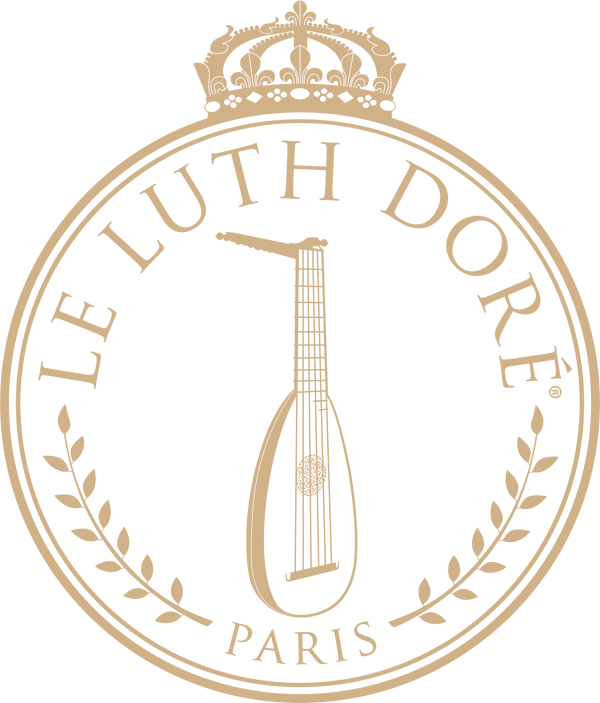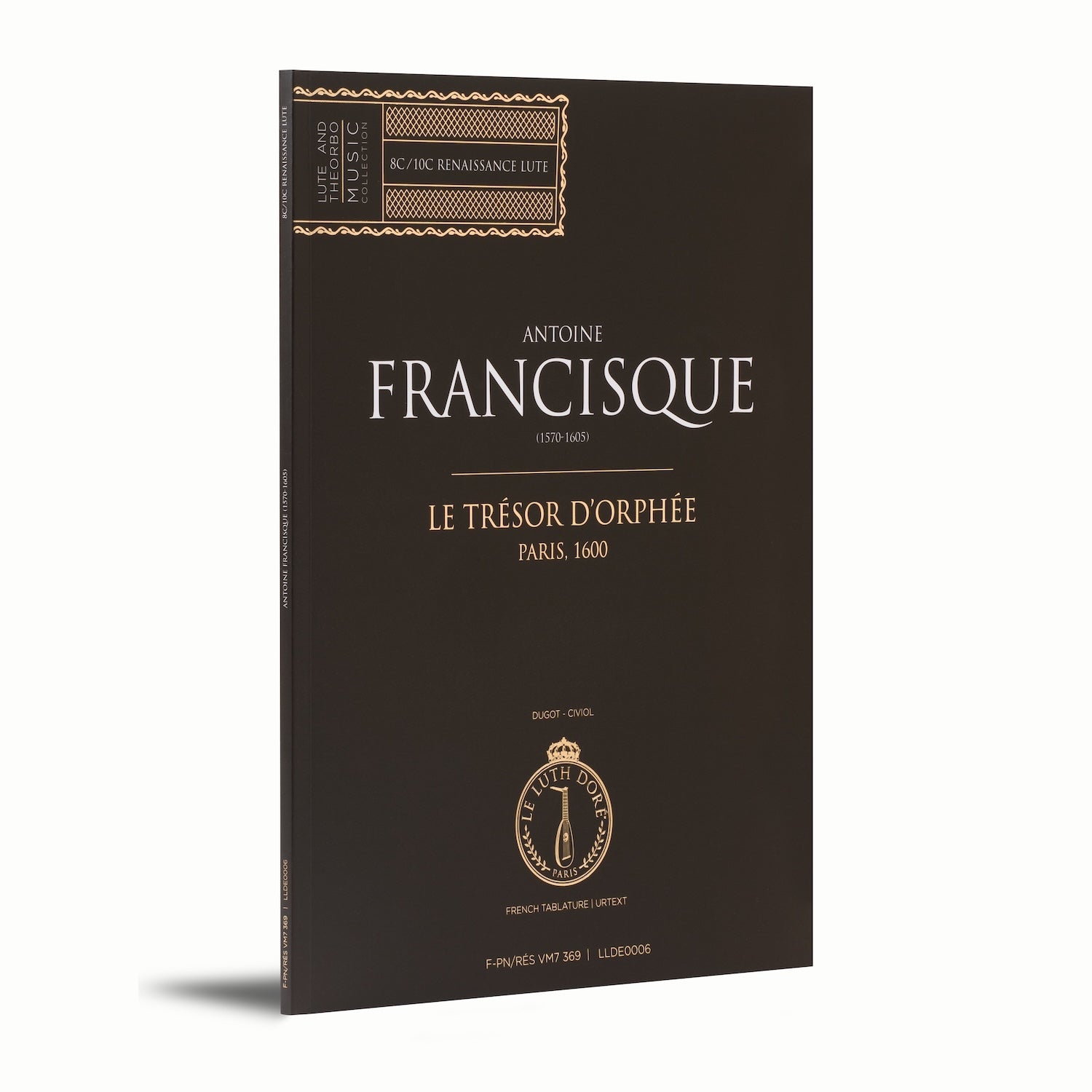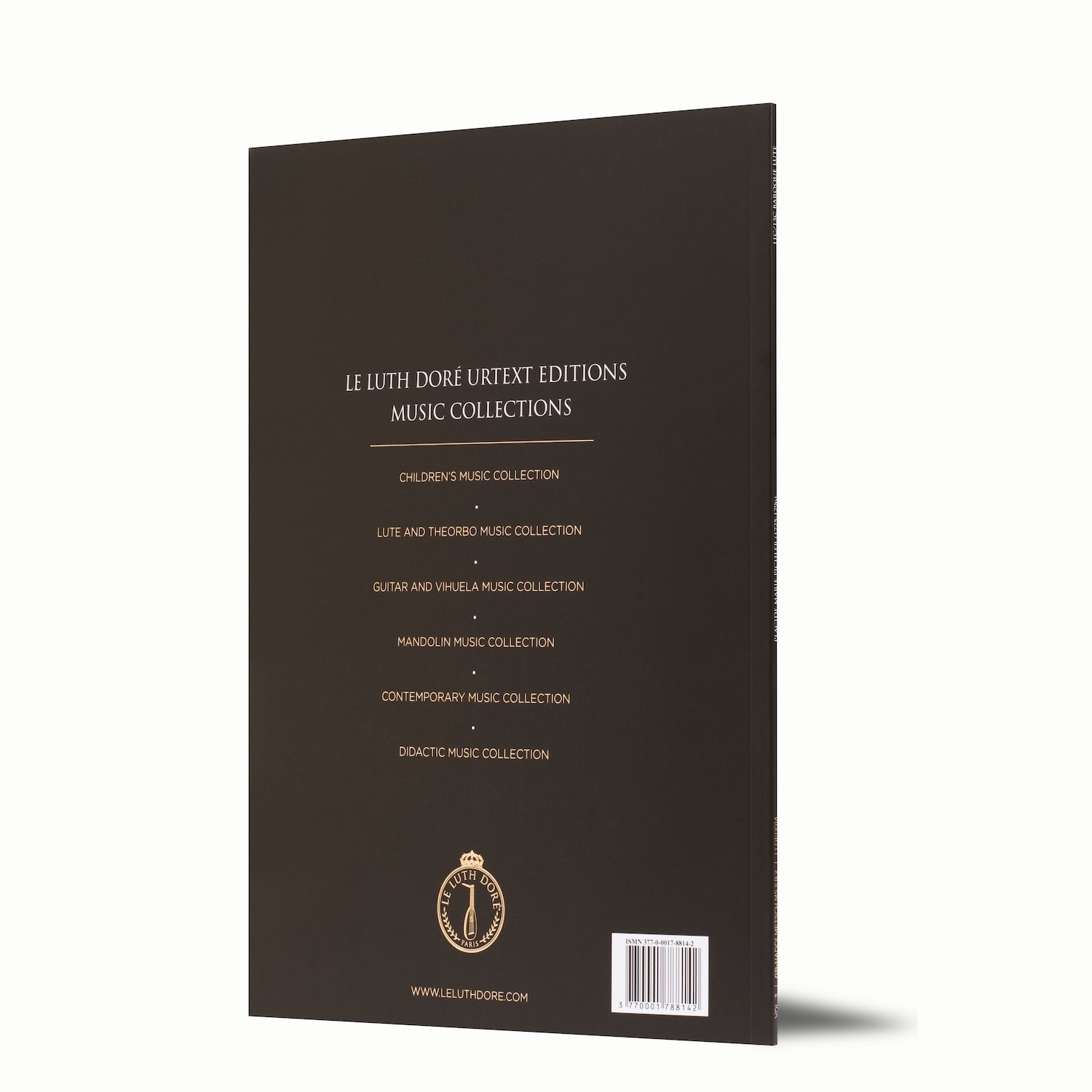My Store
Le Trésor d'Orphée, Paris 1600
Le Trésor d'Orphée, Paris 1600
SKU:LLDE0006
• Composer: Antoine Francisque (1570–1605)
• Title: Le Trésor d’Orphée
• Subtitle: Paris, 1600
• First edition: Le Roy & Ballard, Paris
• Year of publication: 1600
• Source: F-Pn/Rés Vm7 369
• Scholarly edition based on original sources
• Accurate transcriptions, historical fingering, optimal readability
• Ideal for concerts, research, or higher education
No VAT applied (Article 293 B of the French Tax Code).
3 payments at 0% interest with Klarna
Couldn't load pickup availability
Share
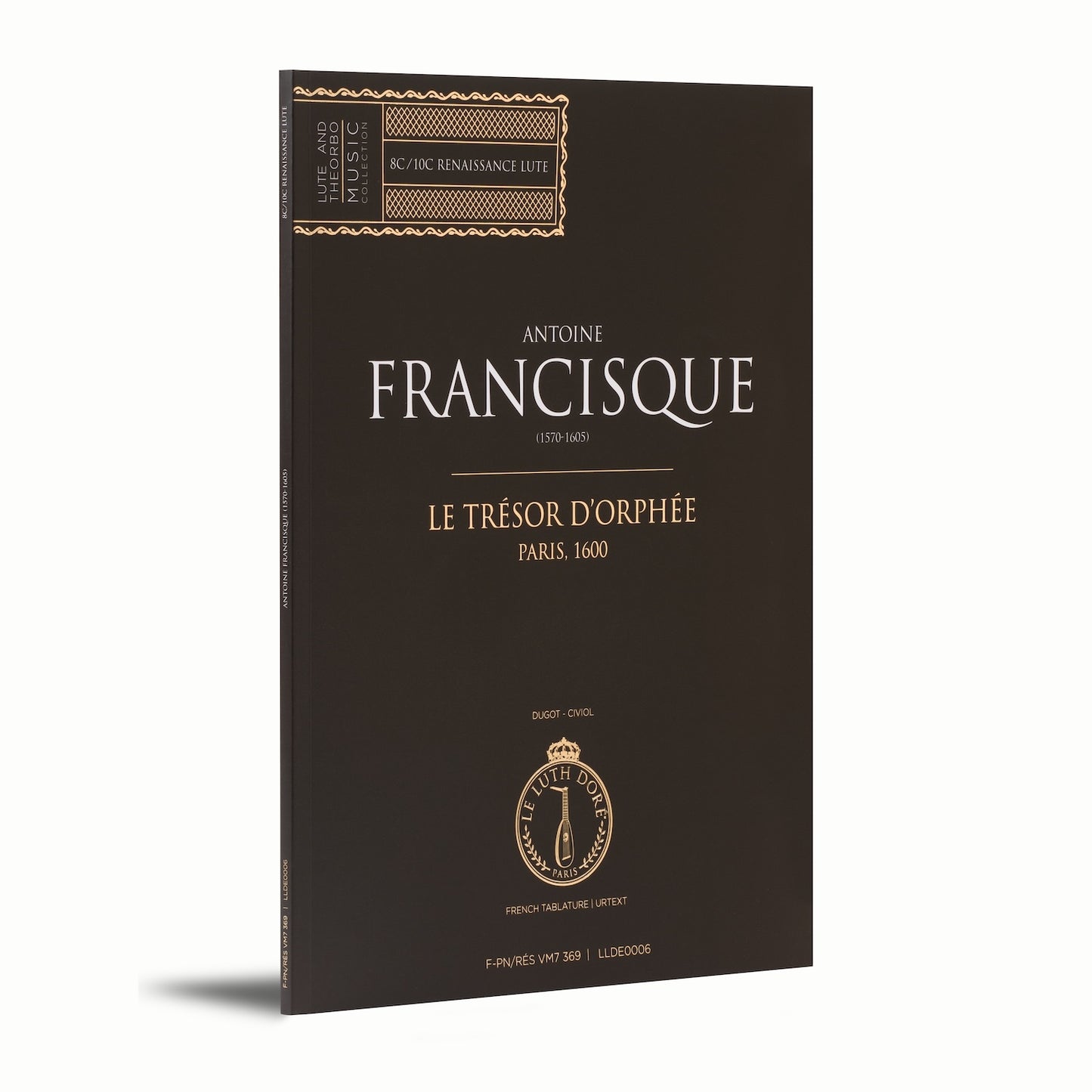
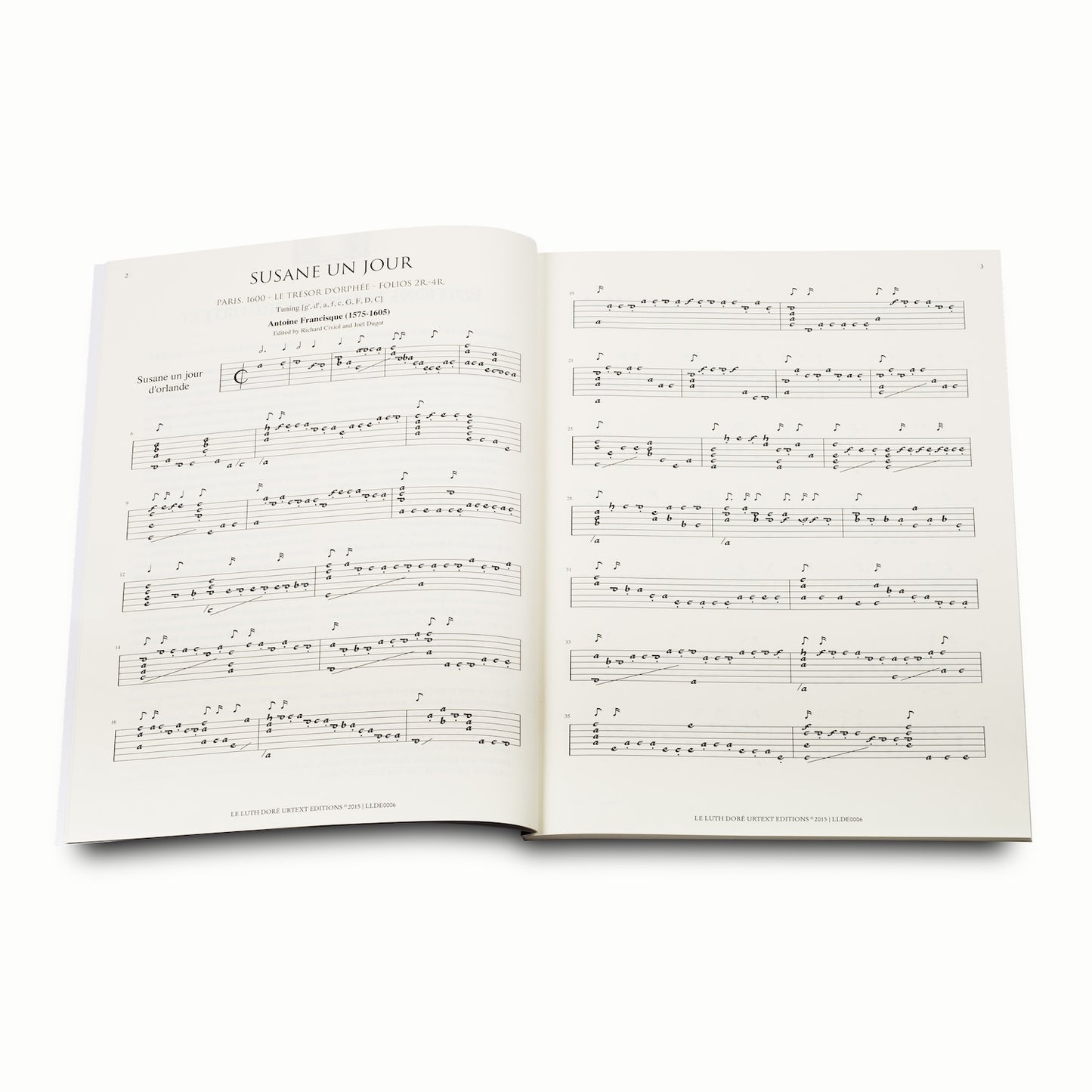
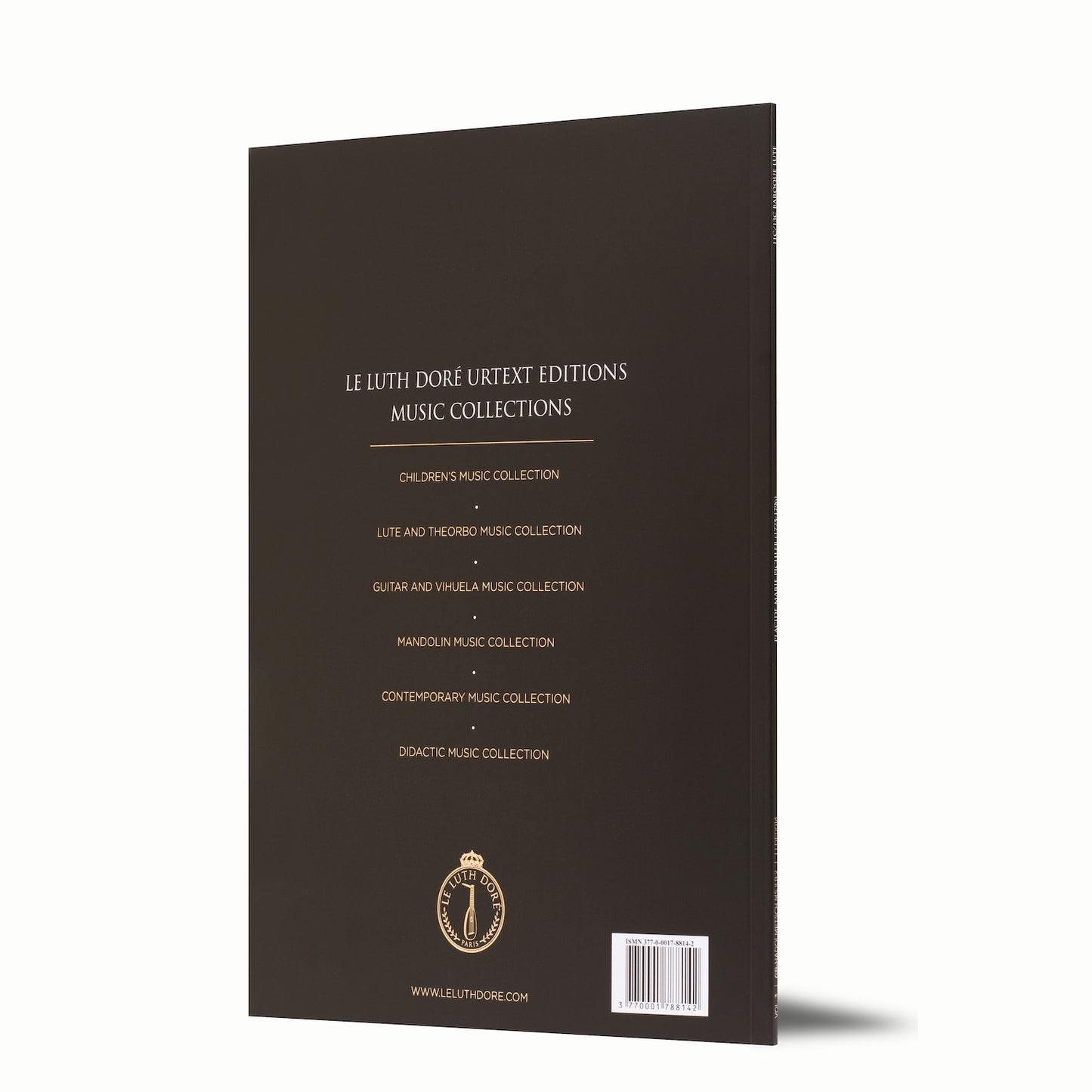
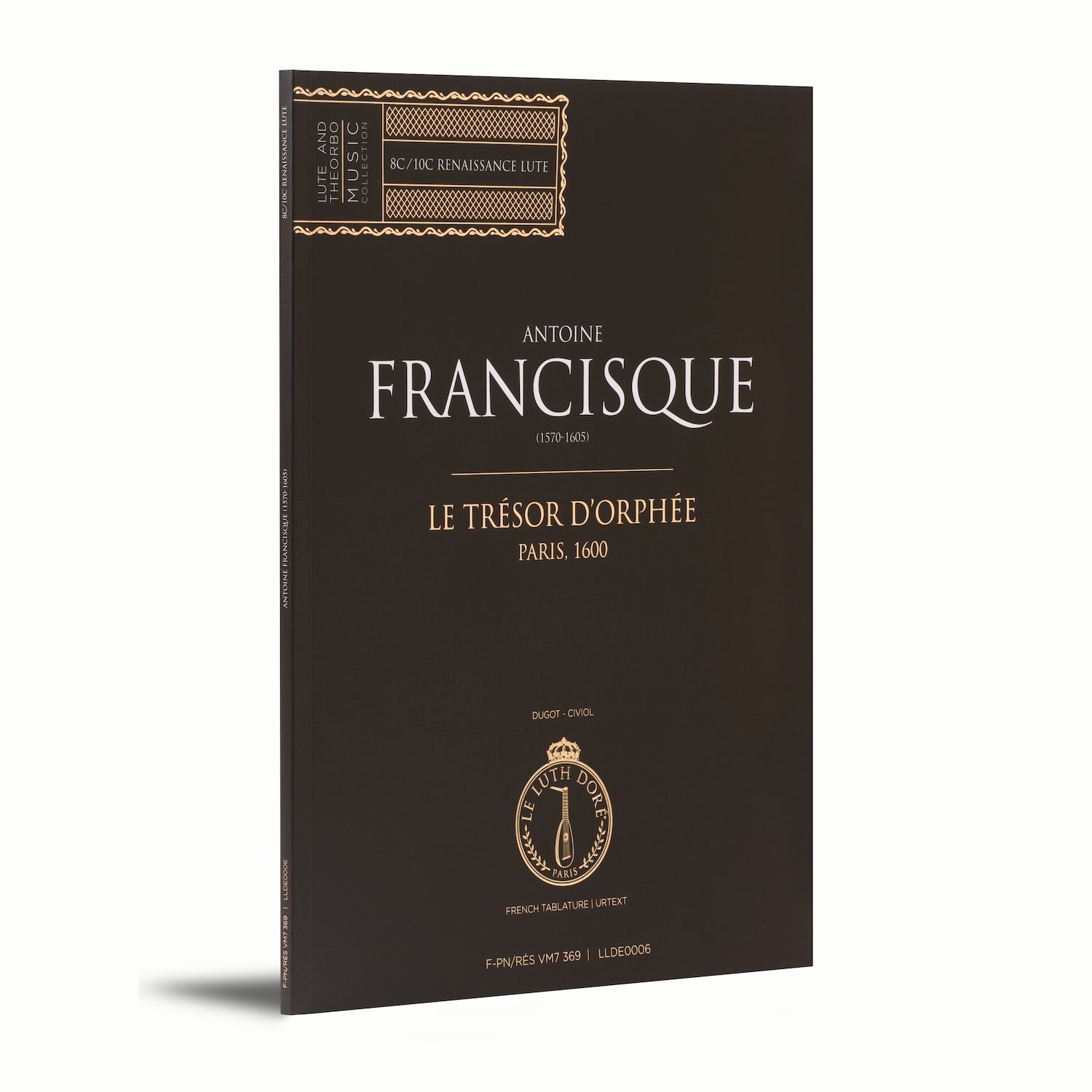
The Revival of the Lute in France after the Wars of Religion
Published in Paris in 1600, Le Trésor d’Orphée marks the revival of lute music in France, between polyphonic tradition and harmonic invention.
A structured collection of seventy-one pieces, it offers varied colors and great stylistic freedom.
This edition was prepared by Joël Dugot and Richard Civiol, based on the copy printed by Ballard and preserved at the Bibliothèque nationale de France.
Product Details
Overview
Le Trésor d’Orphée by Anthoine Francisque
Published in Paris in 1600, Le Trésor d’Orphée by Anthoine Francisque (ca. 1570–1605) marks the revival of lute music in France after the Wars of Religion. It was the first lute publication since 1571, the year of Adrian Le Roy’s last collection.
Carefully printed by Ballard, the volume contains seventy-one pieces combining polyphonic arrangements, fantasias, preludes, and dances. Its structure recalls that of sixteenth-century tablatures, although several pieces stand out for their originality. For example, the setting of Susanne un jour by Roland de Lassus is almost unrecognizable.
The collection bears witness to the stylistic transition from contrapuntal fantasia to harmonic prelude, foreshadowing the evolution of musical forms in the seventeenth century. Francisque, a lutenist and lute master, likely taught his art and took part in court ballets—precursors to opera. His death in Paris in 1605 marked the end of his contribution to the history of the lute.
This edition was prepared by Joël Dugot and Richard Civiol, based on the copy printed by Ballard and preserved at the Bibliothèque nationale de France.
Editors
Joël Dugot – Former Curator of the Paris Museum of Musical Instruments, Musicologist, Luthier, and Lutenist
A specialist in the lute, Joël Dugot initially studied philosophy before turning to instrument making. In 1977, he founded the journal Musique Ancienne, and in 1984 contributed to the creation of the French Lute Society, which he chaired until 2005. Curator at the Paris Museum of Music from 1987 to 2012, he oversaw the plucked string instrument collections and collaborated with CNRS on organology and musical iconography.
Richard Civiol – Lutenist
A musician and copyist, Richard Civiol has explored the lute and theorbo repertoire for several decades. Holder of a First Prize in musical composition, he performs both Renaissance and Baroque music and practices basso continuo. Member of L’Oiselière and Les Musiciens de Mademoiselle De Guise, he performs in France and abroad. He collaborates with various ensembles, orchestras, and choirs and works on the reconstruction of ancient manuscripts.
Urtext Editions
Le Luth Doré Urtext Editions
Le Luth Doré Urtext Editions offer scores faithful to historical sources, optimized for musicians and musicologists. Our editions combine careful engraving, practical layout, durable materials, and a detailed critical apparatus in multiple languages.
Each text is rigorously established note by note to ensure an authentic restitution of the works, including original fingerings and ornamentations, as well as relevant stylistic suggestions.
Prepared by experts, our editions provide clear readability and informed interpretation of the early music repertoire.
We dedicate Le Luth Doré Urtext Editions to the memory of William H. Roberts († 2024), cofounder and source of inspiration for this collection. Without his vision and unwavering support, these editions would never have come into being.
Technical Details
• Editor(s): Joël Dugot & Richard Civiol
• Musical period: Renaissance
• Instrument(s): 8c/10c Renaissance lute
• Instrumentation: Solo Renaissance lute
• Notation: French tablature
• Modern edition: Urtext
• Publisher: Le Luth Doré Urtext Editions
• Year of publication: 2015
• Series: Lute and Theorbo Music Collection
• Pages: 90 pp.
• Dimensions: 230 × 310 mm
• Weight: 0.320 kg
• Binding: Sewn perfect binding
• Cover: Soft cover with flaps, anti-scratch lamination, gold stamping, and spot varnish
• ISMN: 377-0-0017-8806-7
Table of Contents
Susane un jour - Susane un jour d'Orlande
Fantaisies - Fantaisie, Fantaisie
Préludes - Prélude, Prélude, Prélude
Passemaises - Passemaise, Passemaise, Passemaise
Pavanes - Pavane Espagnolle, Pavane d’Angleterre, Pavane d'Angleterre
Gaillardes - Fin de Gaillarde, Gaillarde, Gaillarde, Gaillarde
Les Branles simples - Premier Branle simple, Second, Troisiesme, Quatriesme, Cinquiesme, Sisiesme
Branles gays - Premier Branle gay, Second, Troisiesme
Branles de Poitou - Premier Branle de Poitou, Second, Troisiesme
Branles doubles de Poitou - Premier Branle double de Poitou, Second
Branles de Montirandé - Premier Branle de Montirandé, Second
La Gavotte - Gavotte
Branles à cordes avalées - Premier Branle simple à cordes avalées, Second, Troisiesme, Quatriesme, Branle gay, Premier Branle de Poitou, Second, Branle double du Poitou, Gavotte
Pavane - Pavane
Press Reviews

Editions for Baroque Lute
Each volume is based on the most reliable original sources, presented in a rigorous urtext edition.
Dual tablature (French and Italian), refined layout, and discreet annotations support the performer without weighing them down.
A format designed for discerning lutenists, balancing musical clarity, stylistic integrity, and editorial beauty. A timeless repertoire.
